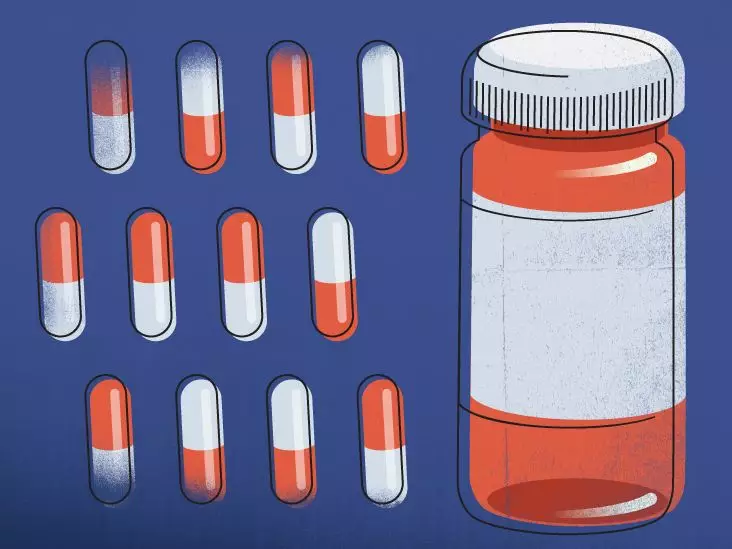Venlafaxine, famously marketed under the brand name Effexor XR, belongs to a class of medications known as serotonin-norepinephrine reuptake inhibitors (SNRIs). This robust class of drugs plays a crucial role in managing mental health disorders by improving the balance of neurotransmitters in the brain. The efficacy of venlafaxine, particularly as an extended-release (ER) oral capsule, lies in its ability to release medication steadily, ensuring that therapeutic levels are maintained consistently throughout the day. This steady release can be instrumental for individuals dealing with mood disorders, offering a reliable avenue for managing symptoms effectively.
Unlike many medications in its category, venlafaxine is tailored for specific adult conditions, making it a versatile option for treating generalized anxiety disorder (GAD), social anxiety disorder, panic disorder, and major depressive disorder. However, the path to finding the right dosage for each individual is nuanced, necessitating careful medical supervision tailored to unique patient needs.
The Importance of Individualized Dosing
Venlafaxine’s dosing regimen is not a one-size-fits-all model; it’s intricately linked to individual treatment plans that take into consideration a patient’s specific diagnosis and their response to the medication. Typically, healthcare providers initiate treatment with a conservative dose, often starting at 37.5 mg, to mitigate potential side effects. This cautious approach is critical, particularly for those new to antidepressants, as it allows healthcare professionals to observe how the patient reacts before making necessary adjustments.
The prescribing physician will gradually increase the dosage if required, ultimately prescribing the lowest effective dose that achieves the desired therapeutic effects. For many conditions, the typical initial dose is around 75 mg, with a maximum recommended cap of 225 mg per day for specific diagnoses like GAD and depression. This incremental adjustment approach not only facilitates a smoother transition onto the medication but also fosters patient confidence that their treatment plan is personalized.
Utilization and Administration Guidelines
Understanding how to properly take venlafaxine is crucial for its effectiveness. Patients are advised to take the capsules whole—cutting or chewing them could disrupt the medication’s gradual release. Consistency is key; taking the medication at the same time daily—be it in the morning or evening—can significantly enhance adherence and maintain stable blood levels of the drug.
Additionally, healthcare professionals may recommend practical strategies to help patients remember their doses, such as setting alarms or timers. This kind of supportive guidance is vital, especially as venlafaxine is often prescribed as a long-term treatment. Regular follow-ups with the prescribing doctor can ensure that the patient remains on an optimal dosage and can further encourage open communication regarding side effects or concerns that may arise during treatment.
Understanding Risks and Side Effects
While venlafaxine can be transformative for many patients battling mental health issues, it isn’t without risks and potential side effects. Dosage increases can entail various adverse effects, including but not limited to anxiety, dizziness, nausea, and even more severe symptoms in cases of overdose. Such risks underscore the importance of staying in close contact with healthcare providers throughout the treatment process.
In instances where patients suspect they’ve ingested an unsafe quantity of the medication, immediate action is crucial. The potential physical symptoms—ranging from cardiovascular irregularities to altered sensations—are serious and require prompt medical attention. This aspect highlights the fine balance between achieving therapeutic benefits while managing potential complications—a delicate dance that healthcare providers navigate meticulously with their patients.
Emphasizing Collaborative Communication
One of the most substantial pillars of effective treatment with venlafaxine is the ongoing dialogue between patient and provider. Each individual’s experience with mental health challenges is unique, and as such, treatment must be tailored accordingly. Active discussions about side effects, effectiveness, and any concerns can help foster a supportive atmosphere conducive to healing.
Healthcare professionals are tasked with ensuring that their patients are not merely receiving a prescription, but are also empowered to engage with their treatment actively. Patients should feel encouraged to speak up about what they are experiencing, whether those experiences align with the expected outcomes or introduce unanticipated challenges.
In this era where mental health awareness is continually evolving, offering a nuanced understanding of medications like venlafaxine is essential. The journey toward mental well-being is multifaceted, and navigating it successfully demands not only effective medications but also a strong support system and an open line of communication between patients and providers.


Leave a Reply